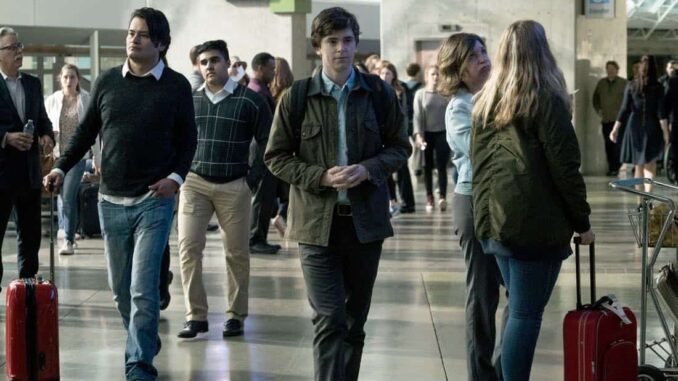
In the ever-shifting landscape of television production, few things remain stable for long. Creative teams rotate, directors cycle in and out, and even long-running shows experience behind-the-scenes turnover as networks adjust budgets, schedules, and creative direction. That’s why the consistency of The Good Doctor’s crew stands out as an anomaly in modern TV. Across its many seasons, the medical drama has preserved an unusually steady core team—writers, producers, department heads, and even technical advisors—raising the question: what makes this show such an exception?
According to industry observers, the answer lies in a unique combination of leadership, culture, and production design that encourages long-term commitment.
First, there is the influence of Freddie Highmore, who not only leads the series on screen but also serves as an executive producer. Colleagues describe him as collaborative, prepared, and deeply respectful of everyone on set—qualities that set the tone for the entire production. Crew members often note that Highmore’s professionalism contributes to a stable, low-conflict environment where people want to stay. In an industry where ego clashes and creative disputes can quickly drive talent away, The Good Doctor has cultivated a culture where input is valued and communication is clear.
Equally important is the steady guiding hand of showrunner David Shore and the producing team. While many series undergo creative restructuring between seasons, The Good Doctor has maintained a cohesive vision from day one. Writers and directors know what the show is, what it aims to say, and how it wants to say it. This consistency reduces the behind-the-scenes turbulence that typically leads to staff turnover.
Another factor is the show’s logistical stability. Filming in Vancouver—widely considered one of the most production-friendly cities in North America—offers a well-established pool of skilled crew members who value reliable, long-term work. The show’s regular schedule, respectful planning, and predictable season structure give crew the kind of professional stability that is increasingly rare in television.
Moreover, the subject matter itself contributes to crew loyalty. Because the series involves detailed medical choreography, prosthetics work, and carefully researched surgical procedures, replacing key technical staff would be both disruptive and expensive. Over the years, the team has built a specialized workflow that blends medical accuracy with dramatic storytelling. The continuity of consultants, makeup teams, VFX supervisors, and medical advisors helps maintain the show’s high standard of realism.
A final, often overlooked factor is morale. Multiple cast and crew members have described the set as “a family,” “supportive,” and “remarkably calm for a medical drama.” In an industry notorious for burnout, The Good Doctor offers something rare: a workplace where people feel respected and creatively fulfilled. For many, that alone is reason enough to stay season after season.
In an era of constant change, The Good Doctor’s behind-the-scenes stability is more than a curiosity—it’s a quiet testament to strong leadership, mutual respect, and a collaborative environment that values human connection as much as the story it tells. And perhaps that’s exactly why the series continues to resonate so deeply with audiences worldwide.
